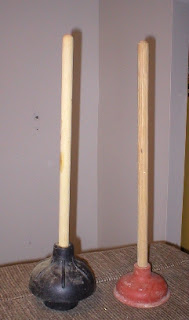Earthquake preparedness at home, school and at work
My homeland, the
Philippines is not only a typhoon magnet, but it is also located in the Pacific
Ring of Fire. As my country is perched on the Pacific Ring of Fire, it is very
much at risk to tectonic shifts that could cause strong and devastating
earthquakes.
Last year, a tectonic
origin earthquake with a magnitude of 7.2 struck Region VII specifically in
most cities and towns of Bohol, and Cebu City. The ground shook and trembled so
strong and hard which caused casualties and structural damages. The recent
quake has been recorded as one of the deadliest in the Philippine history.
There is no accurate
tool that can predict nor forecast when a seismic activity can occur and we can never stop
it from happening. In most situations we can reduce the chance of injury if we
are prepared and well-equipped to handle this kind of destructive disaster.
Below is an Earthquake
Preparedness Guide provided by PHIVOLCS (Philippine Institute of Volcanology
and Seismology)
Additionally according
to the rescuers and experts of Earthquake Country Alliance (ECA) the following
actions are not recommended to do during an earthquake.
DO NOT run outside or to
other rooms when the trembling is strong because you may not be able to move
far without being injured as objects may fall unexpectedly on you. Better stay
inside if you are inside a high building and look for a sturdy table to duck
and cover and stay outside if you are outside. Stay away from facades, windows,
glass cabinets and other architectural details as these are often the first
ones to collapse
DO NOT stand in a
doorway. The doorway will not protect you from falling objects nor stronger to
keep you safe.
DO NOT get in the
"triangle of life" This information as an alternative to "Drop,
Cover, and Hold On" advice has been circulating again lately. According to ECA this triangle of life
recommendation is not credible and may pose life threatening instances as it is
based on several wrong assumptions which are as follows:
“buildings always collapse in earthquakes (wrong- especially in
developed nations, and flat "pancake" collapse is rare anywhere);
when
buildings collapse they always crush all furniture inside (wrong- people DO
survive under furniture or other shelters);
people
can always anticipate how their building might collapse and anticipate the
location of survivable void spaces (wrong- the direction of shaking and unique
structural aspects of the building make this nearly impossible) ; and
during
strong shaking people can move to a desired location (wrong- strong shaking can
make moving very difficult and dangerous).”
Photo credits: phivolcs.dost.gov.ph
Reference:
earthquakecountry.info
http://www.snopes.com/inboxer/household/triangle.asp
http://www.phivolcs.dost.gov.ph/images/IEC/what_to_do_pocketsize.pdf


Comments
Post a Comment